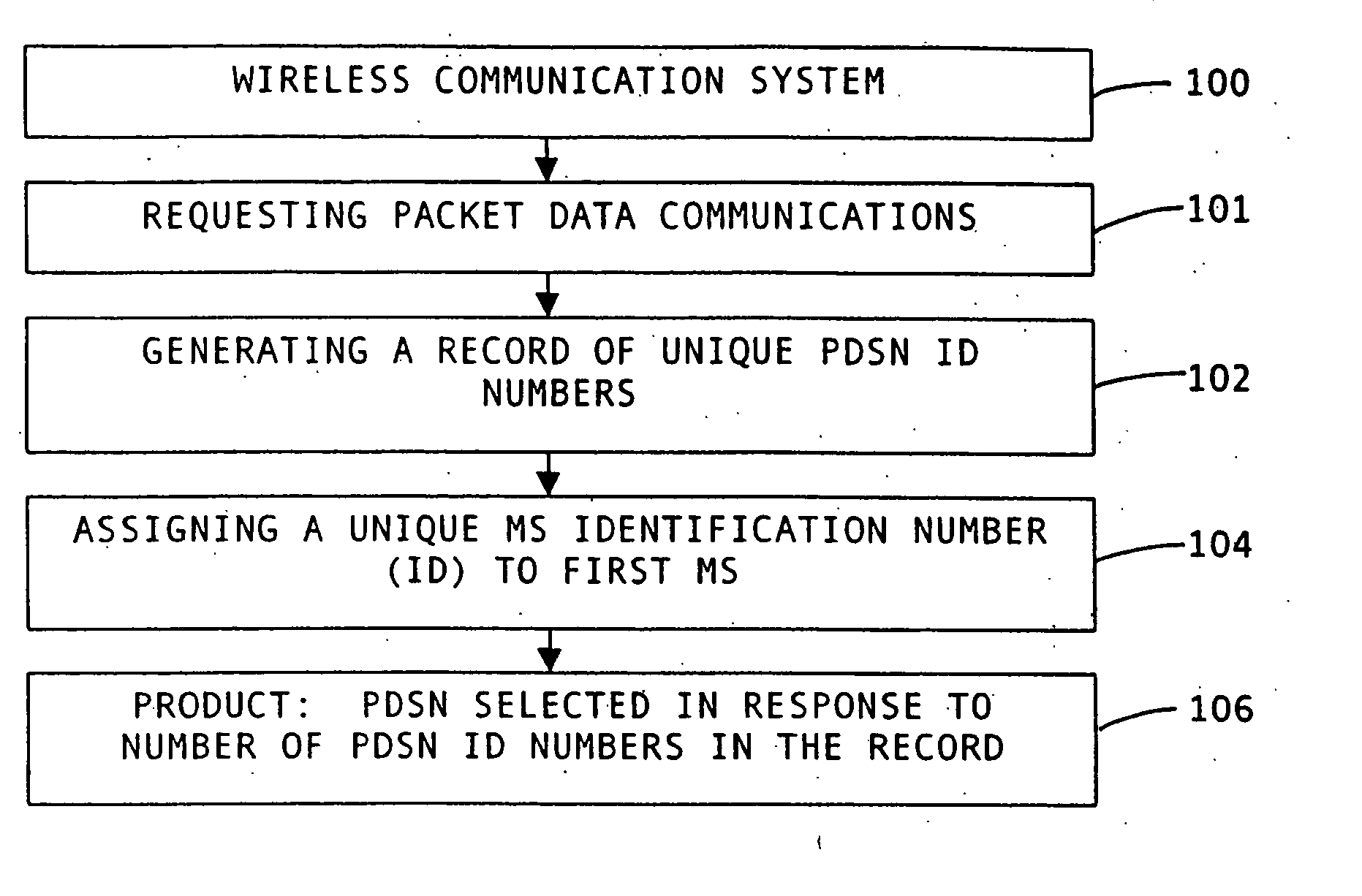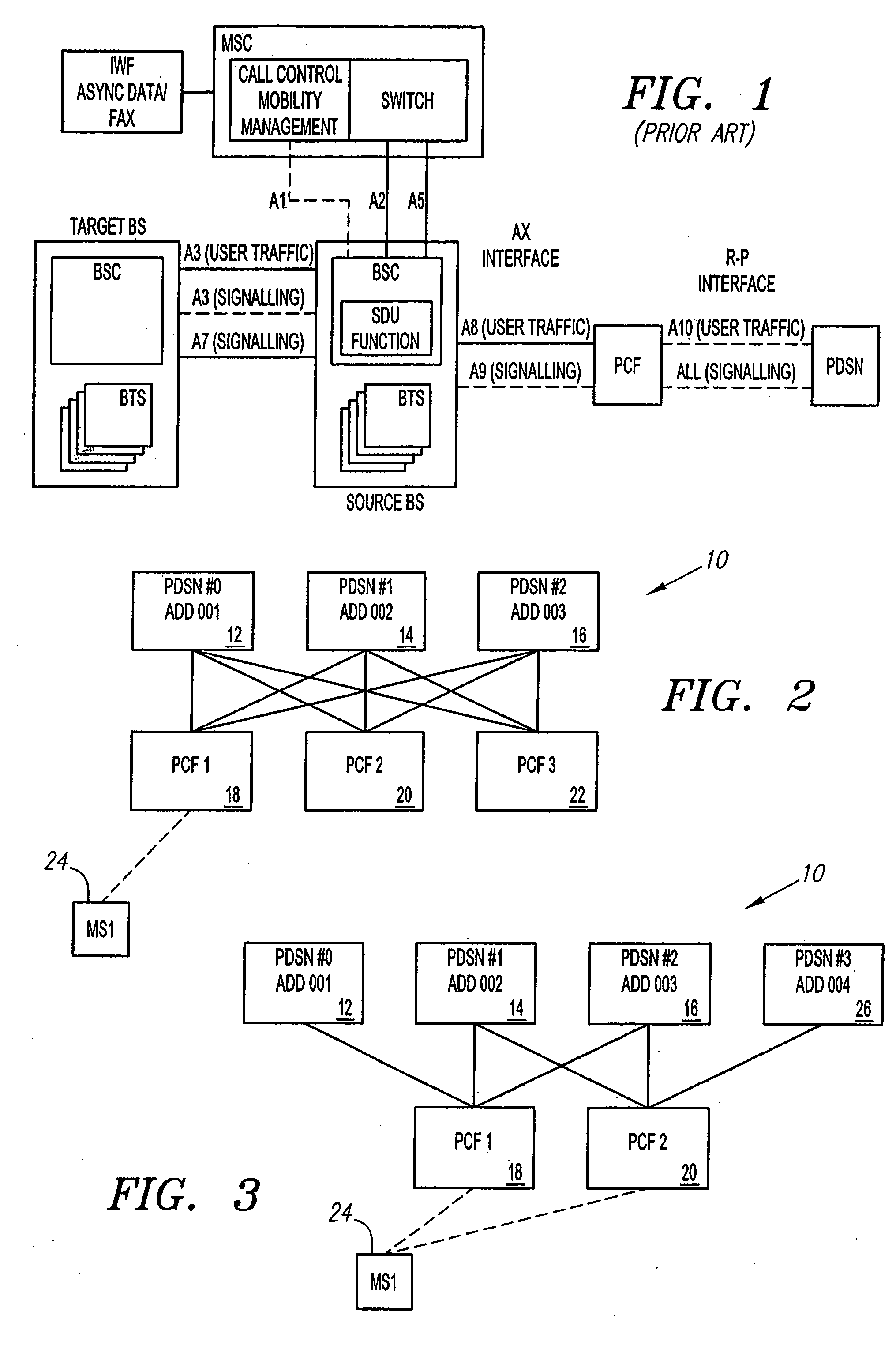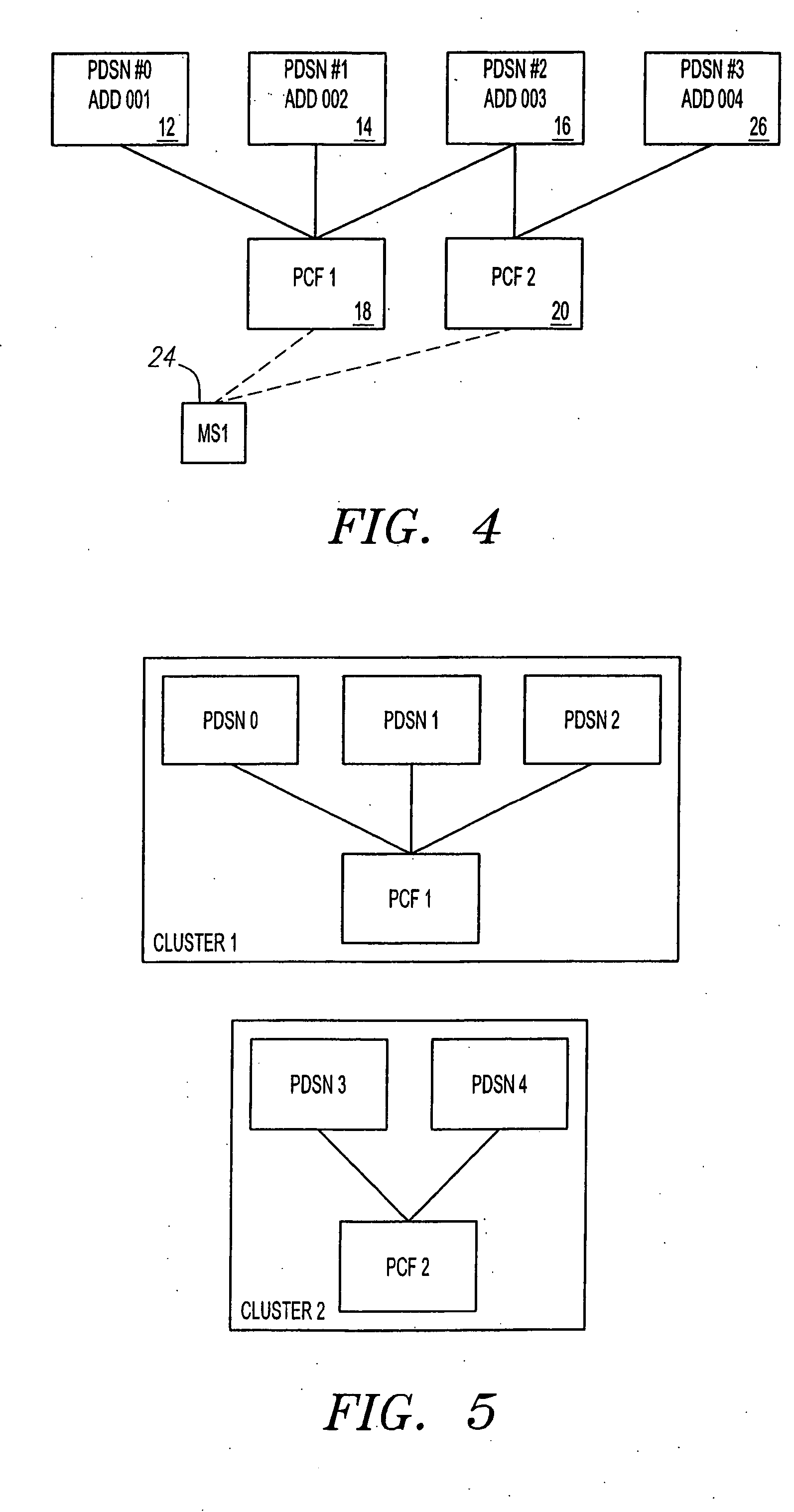System and method for packet data servicing node (PDSN) initial assignment and reselection
a packet data and initial assignment technology, applied in data switching networks, multiplex communication, assess restrictions, etc., can solve the problem that the packet data link between the ms and the pdsn, once initially selected, may become dorman
- Summary
- Abstract
- Description
- Claims
- Application Information
AI Technical Summary
Problems solved by technology
Method used
Image
Examples
Embodiment Construction
In short, the heart of the invention is a methodology embodied in a set of machine executable instructions. Typically, the instructions are written in a medium which can be accessed as memory by a computer, or which can be read by a computer. The set of instructions are typically embodied as a computer application which orders the computer microprocessor to perform the series of steps needed to cause a PCF to select a PDSN in accordance with the algorithm described in detail below.
A PDSN table must be configured at PCF. Each PCF maintains a table that includes all PDSNs it is connected to. Each table entry must contain (but is not limited to) a PDSN identification (Id) number, and an IP Address associated with the PDSN. It is important that the PDSN Id numbers are assigned consistently, stored in a predetermined ordered sequence (ascending or descending) in all PCFs. An example of such a table, such as might be configured in a PCF is shown below (Table 1).
TABLE 1PDSN NumberIP A...
PUM
 Login to View More
Login to View More Abstract
Description
Claims
Application Information
 Login to View More
Login to View More - R&D
- Intellectual Property
- Life Sciences
- Materials
- Tech Scout
- Unparalleled Data Quality
- Higher Quality Content
- 60% Fewer Hallucinations
Browse by: Latest US Patents, China's latest patents, Technical Efficacy Thesaurus, Application Domain, Technology Topic, Popular Technical Reports.
© 2025 PatSnap. All rights reserved.Legal|Privacy policy|Modern Slavery Act Transparency Statement|Sitemap|About US| Contact US: help@patsnap.com



